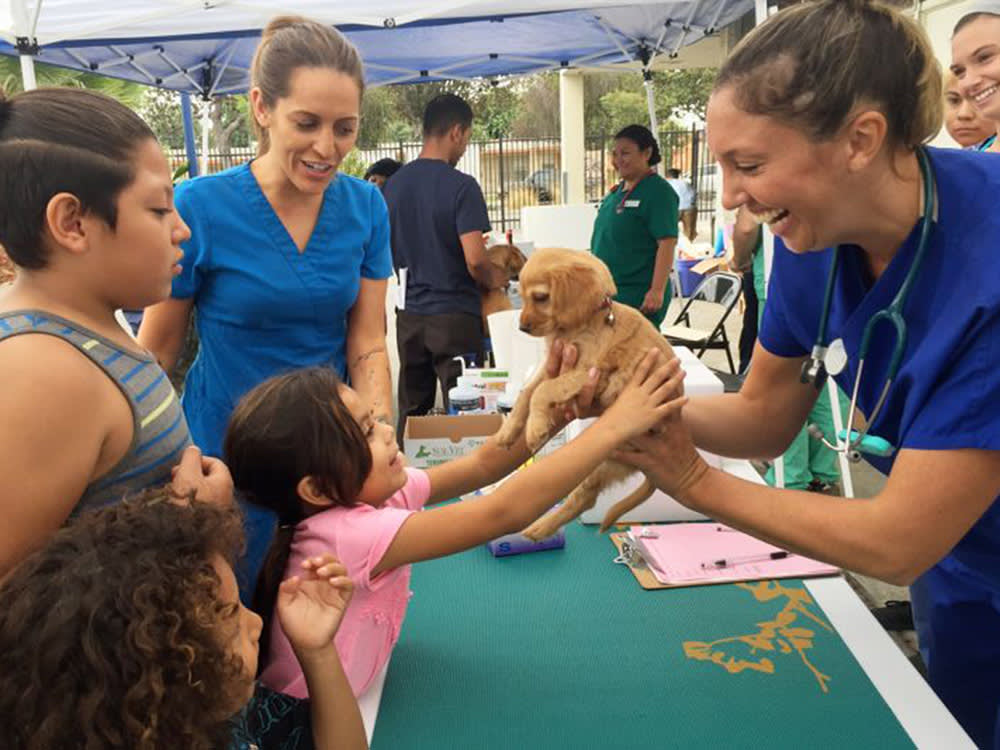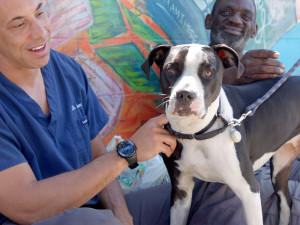How Pets for Life Is Breaking Down the Biggest Barrier to Pet Parenthood: Money
Tens of millions of pet parents experience poverty. Pets for Life helps these families receive the care they need for their furriest members.
Having a pet is a blessing, but it should not be a financial privilege.
Grassroots efforts, such as The Street Vet and Muddy Paws, are humbling examples of local activists creating impact for the underrepresented. But the prize for largest program bent on democratizing pet ownership probably goes to Pets for Lifeopens in new tab, run by the Humane Society of the United States (HSUS) since 2011. Their programs elevate the welfare of tens of millions of pets and their families at a disadvantage due to housing inequality, lack of access to affordable veterinary care, and “pet resource deserts,” or locales where pet food, services, and necessary supplies are few and far between.
To date, Pets for Life has served more than 245,000 pets (we’ll pause while you contemplate that stunning number.) Kinship spoke with Amanda Arrington, senior director of Pets for Life, to learn more about the program’s vision, long-term goals, and what all animal welfare organizations can learn from them.
How It All Began
Arrington was running Beyond Fences, a non-profit in Durham, North Carolina, to help families untether dogs. She took the time to understand the complex reasons why some families keep their dogs outdoors, which was a pretty pivotal approach at the time. “The community in Durham was welcoming and willing to have patience with me as I learned the need to listen to the community’s perspective and to not go in with a set agenda,” Arrington says.
How much do you spend on your pet per year?
Around the same time, in the aftermath of Hurricane Katrina, animal welfare organizations were trying to figure out how to more effectively spay and neuter pets in Louisiana and Mississippi. Arrington joined that effort, which eventually became Pets for Life. The organization soon launched in Chicago, Atlanta, Philadelphia, and later, Los Angeles.
“It was always the same story,” Arrington notes. Systemic housing inequities, low rates of home ownership, and racial and economic segregation were all factors in families struggling to access pet food and vet care. Pets for Life got to know these families and their pets, and provided resources at absolutely no cost to pet owners.
They Proved That Grassroots Activism Works
Tens of millions of pets live with families experiencing poverty. That’s almost three times the number of pets entering shelters. “We were very focused on collecting data so that we could accurately and appropriately represent the community’s experience,” Arrington says. Pets for Life now has a full-time Geographic Information Systems (GIS) analyst to map out marginalized and underserved communities. Most of these areas share one sobering statistic: Almost none of the pets living in these neighborhoods had ever seen a veterinarian. Once Pets for Life came in, nearly 90 percent of pets were spayed or neutered and had access to health care.
What We Can Learn from Pets for Life
A key differentiator of Pets for Life: The organization leads without judgment and with a trauma-informed approach. Understanding the challenges families face, and the lengths they will go to help their animals despite those challenges, became a constant source of awe for HSUS staffers. In fact, a decade of data from the program has helped shift the racial and economic. “We believe strongly at Pets for Life that pet ownership should not be something afforded only to those with higher incomes,” she says. “There is not a correlation between how much money you have and how much love you have to give.”
Why Pets for Life Is Still Growing
Over the past decade, more than 50 groups nationwide (including Native Nations, community medicine clinics, and animal shelters) have become Pets for Life mentorship partners. The COVID-19 pandemic, in particular, inspired hundreds more organizations to expand pet food banks and provide free veterinary care to owned pets.
Arrington hopes animal welfare can seize the opportunity to celebrate pets as a great unifier, to use the position, power, and privilege to make lives better for people and pets alike. “We’re invited into people’s lives because of their animals,” she says. “And if we can use that privilege to influence a living wage and safe and affordable housing, we can use our position to address all kinds of racial and economic injustice.”
How Can You Help?
Make an effort to understand the complexities facing millions of Americans and avoid judgmental responses when an owner needs to surrender their pet or rehomeopens in new tab to a family member.
Donate to programs that serve pets in your community, such as a free spay/neuter program, nonprofit veterinary clinic or veterinary fund. Or advocate for fair housing policies that remove breed and weight restrictions.
When not writing for Kinship, Hamrick serves as the Director of Shelter Outreach and Engagement for the HSUS. The views and opinions expressed in Kinship do not necessarily reflect or represent the policies or positions of the HSUS.





